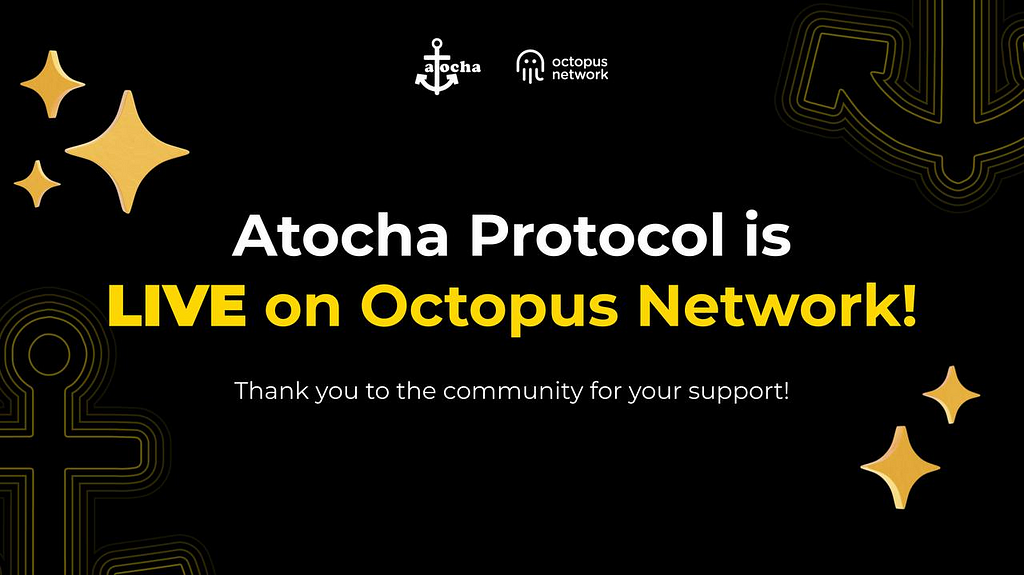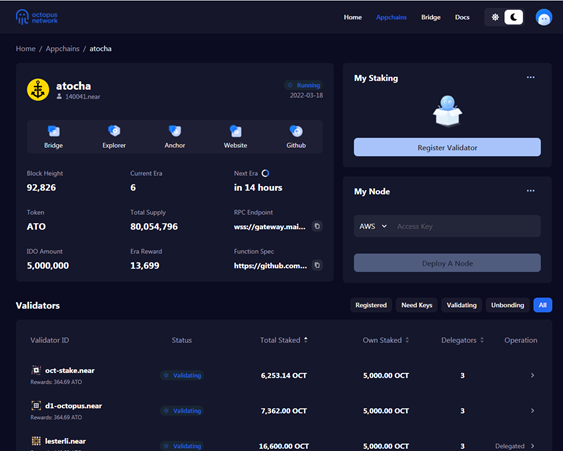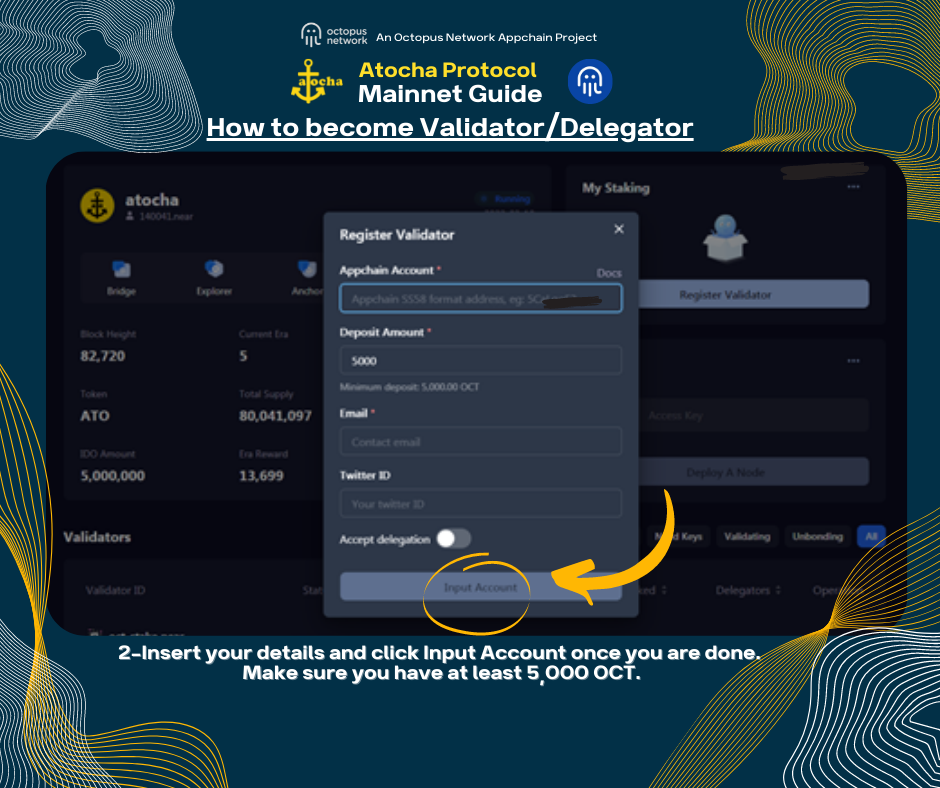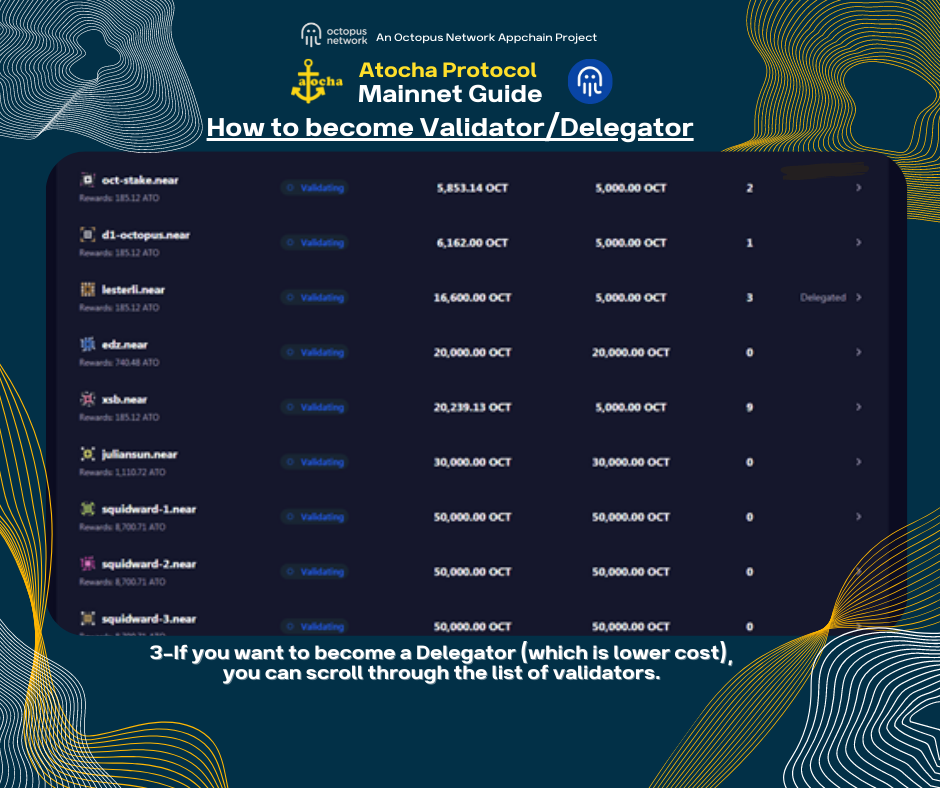
Finally, we launched our Mainnet smoothly on 27 May 2022! We have been keeping quiet about it as we want to test out several mechanisms before we officially announce this good news. Also, today marked the last day of May 2022, and we will be publishing our Newsletter too that summaries what had happened throughout May and what you can expect to come in June 2022 and beyond!
What is Atocha Protocol Mainnet?
Atocha Protocol Mainnet is essentially the official version of the publicly run appchain (application specific blockchain) for the puzzle game community. In other words, all the transactions that took place on the protocol will forever be recorded on the blockchain itself like any other protocol. This includes the transfer of assets, creation of puzzles, solving a puzzle, sponsoring puzzles, claiming rewards and more.

Where can I view the Atocha Protocol Mainnet details: https://mainnet.oct.network/appchains/atocha
Here let us break down some of the key terms that you are seeing on the Mainnet interface.
Bridge: This is a bridging infrastructure for the users to cross the assets from Near Wallet to Polkadot JS Wallet as most of the appchain’s applications are to be connected via Polkadot JS Wallet.
Explorer: Similar to any other blockchain explorer like Etherscan, you can find the specific transaction through transaction ID to verify.
Anchor: As Atocha Protocol is part of the appchain hosted on Octopus Relay (side chain of Near Protocol), there should be a transactional record as well on the Near Protocol side. This is the part of records where Octopus Network is transacting with Near Protocol on behalf of Atocha Protocol.
Current Era: The running days of the appchain. 1 era equals 1 day.
Era Reward: This is the total rewards that will be distributed to the validators per day.
RPC Endpoint: An RPC (remote procedure call) endpoint is like a node’s address: it’s a URL which requests blockchain data can be sent to a specific site. You can understand it as a reader who helps you to convey and interpret the data from a record book.
Function Spec: This is a public record of all the function mechanisms that Atocha team has developed and is available in the current version of the protocol. This is essentially the function list that the protocol can perform.
Why is it so important?
The reason for us to build Atocha Protocol is to empower and inspire the curious mind to continue their journey in building great puzzle games that can ignite others’ curiosity, promote adventure-seeking and also enable a trustless reward mechanism.
Let’s just break that down into a short phrase for each point:
- Inspire the Creators to create amazing puzzle games — with the tool (aka Atocha Protocol), the creators can now create puzzle games ranging from quiz form puzzles to story-based riddles with visuals or even more complex treasure hunting experiences. The main difference between creating the game with the existing infrastructure on Web2 and on the Web3 infrastructure like Atocha Protocol is the ownership of the game IP itself. In other words, as a creator, you are marking your work and tokenized (function to be launched soon) your masterpiece that enables it to be viewed, traded or even leased on different NFT marketplace. For a Web2 setting, none of these can be achieved without a complicated process of transfer of your assets and also price negotiation with a small group of buyers. Imagine that you can easily access a global market through NFT marketplace like Opensea.
- Promote adventure-seeking engagement — what we want to embrace is the excitement to seek clue pieces that ultimately leads you to the treasure. This is what Atocha Protocol wants to be focusing on. Of course, it is no easy path for us to kickstart anything perfect in the very beginning. Plus, we are an open source infrastructure platform that wants to onboard all the creative minds to build their very treasure hunting journey with us. That is why, we are opening up to collaborate with any Creators out there to work on their very own version of puzzle games. This will also include commissioned puzzle games that brands and companies wanted to build for marketing intentions as well.
- Trustless reward mechanism in place — reward distribution can be a hassle when any puzzle game scale-up and becomes more frequent. It is bound to be having some issues as we may make mistakes or there can be certain misbehaviour from the puzzle game organizers as well. To prevent all of these, Atocha Protocol offers a trustless and transparent reward distribution mechanism where all the participants can view the total prize pool locked within the puzzle game and the winner will automatically get the prize once the protocol deemed that the puzzle game is valid (through the process of Challenge mechanism). With that, players can choose the puzzle games based on their preference and also the amount of prize locked.
How to use Atocha Protocol Mainnet?
Atocha Protocol Mainnet is essentially the Layer 1 for all the Puzzle Game Dapps that will be built on the protocol. The first puzzle game dapp will be launched in around 3 June which is developed internally by Atocha team.
Essentially, we want to connect with game developers who have or want to build HTML5 puzzle games as these are the applications that can be easily integrated with the protocol and evolve their puzzle game into a Web3 hybrid. The advantage is the puzzle game now not only offers more rewards for the players but also allowing the creators to have option to convert parts of the puzzle games into NFT (in our next upgrade!).
How to become a Validator of Atocha Protocol?


How to become a Delegator of Atocha Protocol?


Note: All Validator and Delegator can remove their OCT at any point of time. The unbonding period for both will be 21 days. Meaning, day 1 you remove your Validating OCT or Delegating OCT, then on day 21 you can withdraw back to your wallet.
You can read up more here about Octopus Network Staking for Appchain.
Follow us on our official Social Media to get the latest updates:
Twitter Telegram Discord Linkedin Facebook Youtube